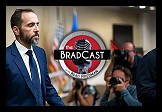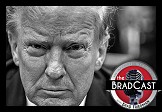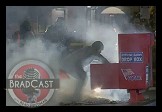Guest Blogged by Ernest A. Canning
Part II of a Five-Part Special Series
(Part I is here. Part III is now here. Part IV is now here. Part V is now here.)
"Those who can make you believe absurdities can make you commit atrocities." -Voltaire
 I don’t want to give the wrong impression. All nations possess a legitimate need to gather intelligence. There have been large numbers of extraordinarily dedicated CIA employees, like Ray McGovern and Valerie Plame Wilson, who have sought to protect this nation from harm. But there is the dark side of the agency, a covert branch which has engaged in deception, intrigue, torture and assassinations, all designed to destabilize democratic governments in order to advance and consolidate the power and influence of a US-based, multi-national corporate empire.
I don’t want to give the wrong impression. All nations possess a legitimate need to gather intelligence. There have been large numbers of extraordinarily dedicated CIA employees, like Ray McGovern and Valerie Plame Wilson, who have sought to protect this nation from harm. But there is the dark side of the agency, a covert branch which has engaged in deception, intrigue, torture and assassinations, all designed to destabilize democratic governments in order to advance and consolidate the power and influence of a US-based, multi-national corporate empire.
In Part I of this five-part series, I described how the George W. Bush administration did not wait for legal "permission" from its Department of Justice before embarking on its plan to use torture as means of forcing confessions and other information from detainees. In "Prosecute or Perish" I stressed that the current torture scandal is the product of a half-century of CIA torture; that by failing to prosecute those who tortured in our name in the same manner that we prosecuted the Japanese officers who waterboarded my father during World War II, we not only will expose our nation to the charge of hypocrisy but will endanger the very survival of our constitutional democracy and the rule of law.
As I noted in Part I, we cannot move forward unless we honestly examine our past --- which, in this instance, mandates a careful look at the origins of the CIA...
Dark Beginnings
In a sense, it may be said that the CIA was a stepchild of Nazi Germany. As noted by Joseph Trento in Prelude to Terror (2006), its founder, Allen Dulles, had done business with the Nazis before World War II. Dulles served in the O.S.S. in Bern, Switzerland. From 1945 to 1947, preceding the creation of the CIA, Dulles ran his own private and entirely illegal intelligence service in which he “began a massive ex-Nazi recruitment* campaign, using a State Department refugee office as a front.” The recruitment campaign, Prof. Alfred McCoy observed, in A Question of Torture (2006), entailed more than the use of war criminals as spies. It included German scientists “who had directed Nazi experiments into human physiology and psychology” and whose early research would lay the ground work for CIA torture techniques…
The National Security Act of 1947 created the CIA to be an instrument of the newly formed National Security Council (NSC). Five months after that formation, notes McCoy, the NSC promulgated a top secret authorization for the CIA to conduct propaganda programs that would be “supplemented by covert psychological operations."
During his Feb. 16, 2007 interview on Democracy Now, McCoy explained:
In A Question of Torture, McCoy reveals that in 1950 the CIA’s “Project Bluebird” began testing LSD on unwitting American soldiers. From 1953 to 1963, MKUltra, a covert operation under the control of Richard Helms, not only injected North Korean prisoners with LSD but “spiked drinks at a New York City party house, paid prostitutes to slip LSD to their customers…, pumped hallucinogens into children at summer camp, attempted behavior modification on inmates…and collected powerful toxins from Amazon tribes.” The project was terminated when the CIA’s inspector general, having discovered it during a routine audit, determined MKUltra jeopardized “the rights and interests of all Americans.”
In The Shock Doctrine (2007), Naomi Klein provides an extended discussion of the CIA-funded electroshock experiments carried out by Dr. Ewen Cameron of McGill University as “a means to blast his patients back to their infancy…;” a tool designed to make the mind a “blank slate” on which to write a new reality.
Klein quotes from Cameron’s 1962 scientific paper:
Obviously, its memory destroying features makes electroshock a counter-productive tool in the gathering of actionable intelligence. But that finding wouldn't keep the CIA from continuing to search for a way to unlock the key to forced self-incrimination...
KUBARK: The CIA’s 1963 Torture Manual
Neither the drug nor the electroshock experiments satisfied the agency’s maniacal quest to crack the code of human consciousness without loss of the victim’s ability to pass on useful intelligence. Perceived success came by way of academic studies that combined the relatively simple techniques of sensory deprivation with the KGB’s use of self-inflicted pain. This combination produced the how-to-torture manual, KUBARK Counterintelligence Interrogation—July 1963. ("KUBARK" was an early cryptonym for the CIA itself.)
The KUBARK manual, which begins by stating that it is “intended as a guide for interrogation of resistant sources” notes, under the subheading, “Deprivation of Sensory Stimuli,” that “the chief effect of arrest and detention, and particularly solitary confinement, is to deprive the subject of many or most of the sights, sounds, tastes, smells, and tactile sensations to which he has grown accustomed.”
In addition to a McGill University study on sensory deprivation in which student volunteers sitting in a cubicle with goggles, gloves, headphones, and earmuffs began to hallucinate within 48 hours, KUBARK references a study at the National Institute of Mental Health in which two subjects were outfitted in “black out masks, which enclosed the whole head but allowed breathing and nothing else.” The subjects were immersed up to their necks in tanks of slow flowing water, each for a period of less than three hours. It cites a sensory deprivation experiment involving 17 paid volunteers who lay flat on their backs inside a tank type respirator with their arms and legs inside “comfortable but rigid cylinders to inhibit movement and tactile contact.” The only sound was the dull, repetitive humming of the respirator motor. Only 6 of the 17 paid volunteers completed the 36 hour test. “The results confirmed…that (1) the deprivation of sensory stimuli induces stress; (2) the stress becomes unbearable for most subjects; (3) the subject has a growing need for physical and social stimuli, and (4) some subjects progressively lose touch with reality….”
These studies formed the basis for the first basic component of the CIA torture paradigm, sensory deprivation --- also described by McCoy as “sensory disorientation.”
Pay close attention to the 1963 KUBARK torture instructions, for, in the final segment of this series, you will see them reproduced in the Feb. 14, 2007 report [PDF] from the International Committee of the Red Cross ("ICRC") regarding the treatment of 14 high-value “ghost detainees” who were ordered transferred to Guantanamo by the Bush Administration.
KUBARK says coercion is used to induce a child-like “regression” that will lead the victim to look at the interrogator as a father figure. Control must be exerted, starting with the timing and manner of arrest to insure surprise and maximum discomfort. The detainee’s clothes are immediately stripped “because familiar clothing reinforces identity.” Arrest and detention are designed “to deprive the subject of …the signs, sounds, tastes, smells, and tactile sensations to which he has grown accustomed….Results produced only after weeks or months of ordinary imprisonment…can be duplicated in hours or days in a cell which has no light…which is sound proofed, in which odors are eliminated….”
The KUBARK manual explains the preference for self-inflicted pain. “Persons of considerable moral or intellectual stature often find in pain inflicted by others a belief that they are in the hands of inferiors, and their resolve not to submit is strengthened.” Where such pain is intense, it will likely produce “false confessions.”
But “whereas pain inflicted on a person from outside himself may actually focus or intensify his will to resist, his resistance is likelier to be sapped by pain which he seems to inflict upon himself….When the individual is told to stand at attention for long periods, an intervening factor is introduced. The immediate source of pain is not the interrogator but the victim himself.” Per KUBARK, psychological factors --- such as fear engendered by threats to torture --- are more effective than pain induced directly by torture.
It would be a mistake to dismiss the brutal impact of this relatively simple method. As we noted previously in "Fixing the Facts and Legal Opinions Around the Torture Policy", citing A Question of Torture, a 1956 CIA-commissioned, Cornell University study of KGB torture techniques revealed that the simple act of standing in place for eighteen to twenty-four hours produces "'excruciating pain' as ankles double in size, skin becomes 'tense and intensely painful,' blisters erupt oozing 'watery serum,' heart rates soar, kidneys shut down, and delusions deepen." This too should be kept in mind when, in the fourth and final article, we turn to the ICRC’s description of the disorientation caused by application of the twin techniques of sensory deprivation and self-inflicted pain to the 14 high-value “ghost-detainees” whose testimony is documented in the ICRC's report.
But the tactics used, and exposed in the ICRC's report were not new to the post-9/11 period, as many have misreported. The techniques were true and tested, and had found their way into covert U.S. foreign policy long before "everything changed" in September of 2001, as we'll discuss in the next chapter of this series...
Here is a short, graphic video demonstrating three of the CIA's torture techniques --- sensory deprivation (hooding) combined with self-inflicted pain (forced stress position) and waterboarding --- three techniques approved for use by the Bush Administration....
_____
Trento’s CIA connections allege that Dulles recruited George H.W. Bush as a CIA business asset in 1956 after George H.W. moved to Houston and established Zapata-Offshore; that this led to the former President’s involvement with anti-Castro Cubans in which the CIA used Zapata-Offshore oil rigs as training areas in advance of the Bay of Pigs invasion. A pair of Nation magazine articles authored by Joseph McBride in July and August 1988 link George Bush of the CIA to a Nov. 29, 1963 J. Edgar Hoover memo relating to the Kennedy assassination and to a curious denial by then Vice President Bush that he had any connections to the CIA prior to being appointed its Director by President Ford in 1975.
The top secret code name for the Bay of Pigs invasion was “Operation Zapata.” The two repainted naval vessels used in the invasion were given the names “Houston” and “Barbara.”
===
Ernest A. Canning has been an active member of the California State Bar since 1977 and has practiced in the fields of civil litigation and workers' compensation at both the trial and appellate levels. He graduated cum laude from Southwestern University School of Law where he served as a student director of the clinical studies department and authored the Law Review Article, Executive Privilege: Myths & Realities. He received an MA in political science at Cal State University Northridge and a BA in political science from UCLA. He is also a Vietnam vet (4th Infantry, Central Highlands 1968).


 How (and Why!) to 'Extend an Olive Branch' to MAGA Family Members Over the Holidays: 'BradCast' 11/21/24
How (and Why!) to 'Extend an Olive Branch' to MAGA Family Members Over the Holidays: 'BradCast' 11/21/24 'Green News Report' 11/21/24
'Green News Report' 11/21/24
 Former Federal Prosecutor: Trump Must Be Sentenced in NY Before Taking Office Again: 'BradCast' 11/20/24
Former Federal Prosecutor: Trump Must Be Sentenced in NY Before Taking Office Again: 'BradCast' 11/20/24 'Bullet Ballot' Claims, Other Arguments for Hand-Counting 2024 Battleground Votes: 'BradCast' 11/19/24
'Bullet Ballot' Claims, Other Arguments for Hand-Counting 2024 Battleground Votes: 'BradCast' 11/19/24 'Green News Report' 11/19/24
'Green News Report' 11/19/24 Trump Already Violating Law (He Signed!) During Transition: 'BradCast' 11/18/24
Trump Already Violating Law (He Signed!) During Transition: 'BradCast' 11/18/24 Sunday 'Into the Gaetz of Hell' Toons
Sunday 'Into the Gaetz of Hell' Toons Computer Security Experts Ask Harris to Seek Hand-Counts Due to Voting System Breaches: 'BradCast' 11/14/24
Computer Security Experts Ask Harris to Seek Hand-Counts Due to Voting System Breaches: 'BradCast' 11/14/24  'Green News Report' 11/14/24
'Green News Report' 11/14/24 Trump Criminal Cases Fade After Election as GOP 'Does Not Believe in Rule of Law': 'BradCast' 11/13/24
Trump Criminal Cases Fade After Election as GOP 'Does Not Believe in Rule of Law': 'BradCast' 11/13/24 Climate Advocates Brace for Fight With Trump 2.0: 'BradCast' 11/12/24
Climate Advocates Brace for Fight With Trump 2.0: 'BradCast' 11/12/24 'Green News Report' 11/12/24
'Green News Report' 11/12/24 Let It All Out: 'BradCast' 11/11/24
Let It All Out: 'BradCast' 11/11/24 Sunday 'Like it or Not' Toons
Sunday 'Like it or Not' Toons Not All Bad: Abortion Rights Won Big (Almost) Everywhere: 'BradCast' 11/7/24
Not All Bad: Abortion Rights Won Big (Almost) Everywhere: 'BradCast' 11/7/24 'Green News Report' 11/7/24
'Green News Report' 11/7/24 U.S. CHOOSES CONVICTED CRIMINAL, ADJUDICATED RAPIST: 'BradCast' 11/6/24
U.S. CHOOSES CONVICTED CRIMINAL, ADJUDICATED RAPIST: 'BradCast' 11/6/24 ELECTION DAY 2024: Tea Leaves, Probs for Voters, What's Next: 'BradCast' 11/5/24
ELECTION DAY 2024: Tea Leaves, Probs for Voters, What's Next: 'BradCast' 11/5/24 'Closing Arguments' for Undecideds, Third-Party Voters: 'BradCast' 11/4/24
'Closing Arguments' for Undecideds, Third-Party Voters: 'BradCast' 11/4/24 The GOP 'Voter Fraud' Before the Storm: 'BradCast' 10/31/24
The GOP 'Voter Fraud' Before the Storm: 'BradCast' 10/31/24 'Closing Arguments'with Digby and Driftglass: 'BradCast' 10/30/24
'Closing Arguments'with Digby and Driftglass: 'BradCast' 10/30/24 Trump Promises to be a Lawless, Authoritarian President. Believe Him: 'BradCast' 10/29/24
Trump Promises to be a Lawless, Authoritarian President. Believe Him: 'BradCast' 10/29/24 Ballots Burn, Billion-aires 'Obey in Advance', Callers Ring In: 'BradCast' 10/28/24
Ballots Burn, Billion-aires 'Obey in Advance', Callers Ring In: 'BradCast' 10/28/24 Musk's Privatized Internet Satellite System Threatens U.S. National Security
Musk's Privatized Internet Satellite System Threatens U.S. National Security
 VA GOP VOTER REG FRAUDSTER OFF HOOK
VA GOP VOTER REG FRAUDSTER OFF HOOK Criminal GOP Voter Registration Fraud Probe Expanding in VA
Criminal GOP Voter Registration Fraud Probe Expanding in VA DOJ PROBE SOUGHT AFTER VA ARREST
DOJ PROBE SOUGHT AFTER VA ARREST Arrest in VA: GOP Voter Reg Scandal Widens
Arrest in VA: GOP Voter Reg Scandal Widens ALL TOGETHER: ROVE, SPROUL, KOCHS, RNC
ALL TOGETHER: ROVE, SPROUL, KOCHS, RNC LATimes: RNC's 'Fired' Sproul Working for Repubs in 'as Many as 30 States'
LATimes: RNC's 'Fired' Sproul Working for Repubs in 'as Many as 30 States' 'Fired' Sproul Group 'Cloned', Still Working for Republicans in At Least 10 States
'Fired' Sproul Group 'Cloned', Still Working for Republicans in At Least 10 States FINALLY: FOX ON GOP REG FRAUD SCANDAL
FINALLY: FOX ON GOP REG FRAUD SCANDAL COLORADO FOLLOWS FLORIDA WITH GOP CRIMINAL INVESTIGATION
COLORADO FOLLOWS FLORIDA WITH GOP CRIMINAL INVESTIGATION CRIMINAL PROBE LAUNCHED INTO GOP VOTER REGISTRATION FRAUD SCANDAL IN FL
CRIMINAL PROBE LAUNCHED INTO GOP VOTER REGISTRATION FRAUD SCANDAL IN FL Brad Breaks PA Photo ID & GOP Registration Fraud Scandal News on Hartmann TV
Brad Breaks PA Photo ID & GOP Registration Fraud Scandal News on Hartmann TV  CAUGHT ON TAPE: COORDINATED NATIONWIDE GOP VOTER REG SCAM
CAUGHT ON TAPE: COORDINATED NATIONWIDE GOP VOTER REG SCAM CRIMINAL ELECTION FRAUD COMPLAINT FILED AGAINST GOP 'FRAUD' FIRM
CRIMINAL ELECTION FRAUD COMPLAINT FILED AGAINST GOP 'FRAUD' FIRM RICK SCOTT GETS ROLLED IN GOP REGISTRATION FRAUD SCANDAL
RICK SCOTT GETS ROLLED IN GOP REGISTRATION FRAUD SCANDAL VIDEO: Brad Breaks GOP Reg Fraud Scandal on Hartmann TV
VIDEO: Brad Breaks GOP Reg Fraud Scandal on Hartmann TV RNC FIRES NATIONAL VOTER REGISTRATION FIRM FOR FRAUD
RNC FIRES NATIONAL VOTER REGISTRATION FIRM FOR FRAUD EXCLUSIVE: Intvw w/ FL Official Who First Discovered GOP Reg Fraud
EXCLUSIVE: Intvw w/ FL Official Who First Discovered GOP Reg Fraud GOP REGISTRATION FRAUD FOUND IN FL
GOP REGISTRATION FRAUD FOUND IN FL


































